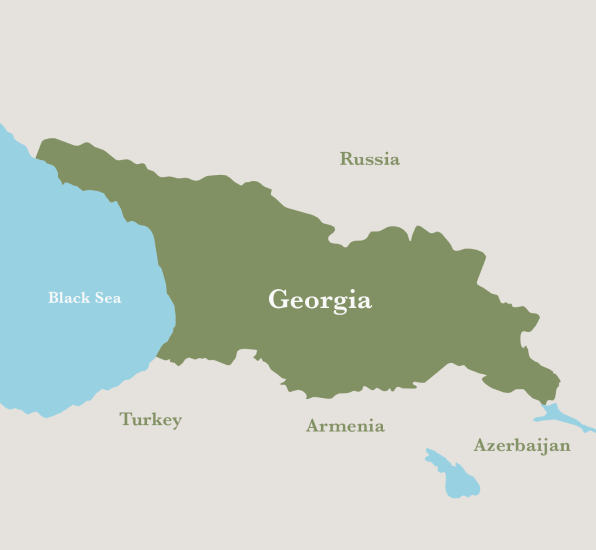Morcheuli Wines and Spirits
The founders of the winery are united by the love for Georgia, Georgian heritage and the passion for Georgian wine. Together they established a wine company that has a winery and vineyards and partnered with some of the best winemakers of Georgia. Using both European and Georgian traditional Qvevri methods, their ambition is to offer the finest wines – “the wine without compromise” – to the consumers in Georgia and abroad.
The main production facility is located in Bolnisi district of Kartli region. Here in 1818 German colonist families from Swabia founded the Katharinenfeld colony and established vineyards and wineries because of the unique terrains and climate of Bolnisi area. We believe that today Bolnisi wines are underrepresented, and we are committed to promoting local specialties together with well-established Kakhetian and Imeretian wine varieties.


Georgia - the Cradle of Wine
Georgia, a small country at the southern foot of the Caucasus Mountains, is one of the oldest wine regions in the world and is known as the birthplace of wine, boasting a history of 8,000 years of winemaking.
The fertile valleys and protective slopes of the Transcaucasia have been home to grapevine cultivation for many millennia, playing a prominent economic role, and making traditions of wine inseparable from the national identity.
georgian grape varieties
Georgia’s territorial and climate conditions are optimal for winemaking. Extremes of weather are unusual: summers are normally short-sleeve sunny, while winters are mild and frost- free. Numerous natural springs and the Caucasian Mountain streams bring mineral-rich water into the valleys. Georgia’s moderate climate and moist air, influenced by the Black Sea, provide the best conditions for vine cultivating.
The soil in vineyards is so intensively cultivated that the grapevines grow up the trunks of fruit trees eventually hanging down along the fruit when they ripen.
Traditional Georgian grape varieties are not widely known in the World yet. Now that the wines of Eastern and Central Europe are gradually coming to international awareness, grapes from this region are becoming better known.


qvevri craftsmanship
Qvevri are the clay vessels used for making wines in the traditional Georgian winemaking method. The earliest qvevri known to store wine date the early Iron Age (7th Century B.C.E.), were initially wide in the middle and tapered at the base, and not buried. The shape of the “modern” vessel continued to evolve through the 3rd century B.C.E. when producers began to bury them in the earth.
Modern technology hasn’t changed the fundamentals of qvevri production. Today’s vessels are still skillfully crafted by hand from local clay. Though it can take six weeks to build a 1,000-liter qvevri, a master craftsman typically builds several qvevri at once. Usually, qvevri range 800 to 3500 liters. In 2013 the Qvevri winemaking method was registered on the UNESCO List of the Intangible Cultural Heritage of Humanity.